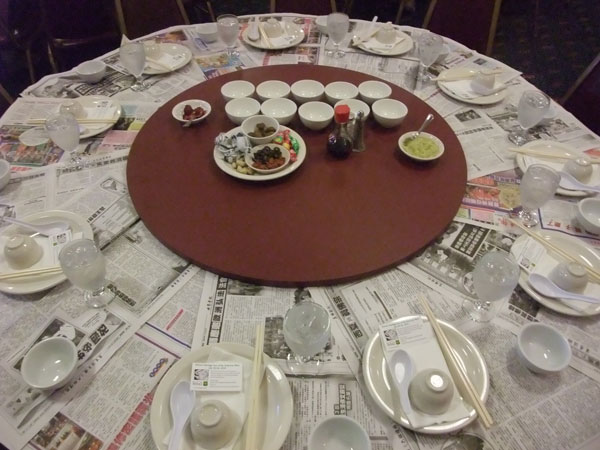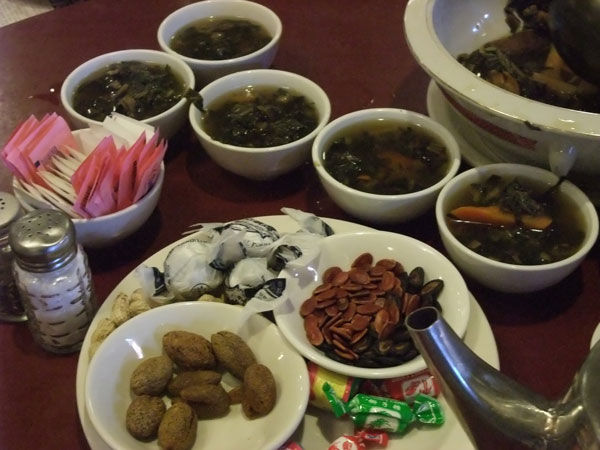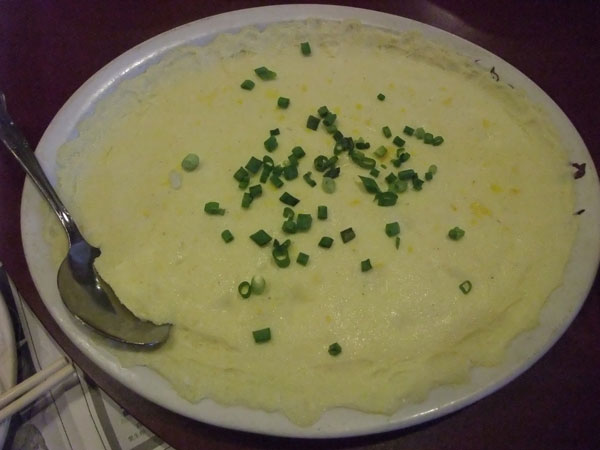

For more than an hour on Monday evening, the plates full of Chinese food – chicken with a ginger-and-green onion sauce, steamed fish with preserved olives, steamed egg - kept arriving at the Four Seas restaurant in Seattle’s Chinatown-International District.
Maxine Chan, a Seattle food anthropologist, devised the recipes as part of the 2010 Chinese Heritage Tour which the Wing Luke Museum and the USDA Forest Service are sponsoring.
She stood before about 90 guests and gave an overview of each dish – and how immigrants from the Toisan area in southern China brought the food they had known in the fields and rolling hills from their homeland to the American West. The kick-off meal to the 2010 Chinese Heritage Tour of the American West had drawn people to the table.
Some guests took notes. Others snapped photographs with their smart phones or larger digital cameras. Some guests explained the food to others. Other guests spotted long-time friends, hugged and chatted.
Chan weaved in down-home stories about the food for added context about the meal. Immigrants from the Toisan area were some of the first people to arrive in the United States from China during the 19th century. A lack of food and stability – at that time – often prompted the push to the American West.
Some mined for gold. Others were cooks. They also brought what they knew – recipes and ways of doing things – to the United States.
For example: Why was the ginger-and-green onion sauce served with the chicken?
“The ginger balances your body. There’s always something to keep balance,” Chan said, noting that the chicken just has its own genuine flavor and that the sauce helps.
Also: Why were newspapers sitting under the plates instead of a nice, white tablecloth?

Many Chinese pioneers from the Toisan area arrived in the United States and kept things simple. Often times, there would be no tablecloth, she said. So, newspapers showed up instead.
She opted not to serve beef on purpose. In the late 1800s, China had bouts of famine, she said. Raising cows would have been unlikely. “If you could afford to raise an animal, you’d have a pig,” she said.
Or, because of land constraints at the time, people in Toisan would raise chickens or ducks.
She also reminded the guests of the Toisanese food in the context of the arrival of immigrants. “The miners didn’t eat this well,” she said. “They had one course or at the most, two courses. The second course might have been rice.”
At one point, Chan asked the guests how the food tasted and how the evening was going. Washington state Rep. Bob Hasegawa sat at one table and quietly flashed a thumbs up.
John Hom, facilities operations manager at The Wing, clutched his camera, took pictures and – of course – enjoyed the feast.
His father left the Toisan – or Taishan – area of southern China in the 1930s and moved to the United States. Hom’s father opened a restaurant in Montana. On Mondays, when his father had a day off from cooking for patrons, he would dish up food similar to the Monday night meal at home for his family.
Hom observed:
The food here tonight was almost exactly what he cooked at home. It’s simple in the preparation. It’s not spiced up….I think my dad would see food as keeping the family and traditions together. That could be passed on. That creates memories.




Comments
Leave a comment Trackback